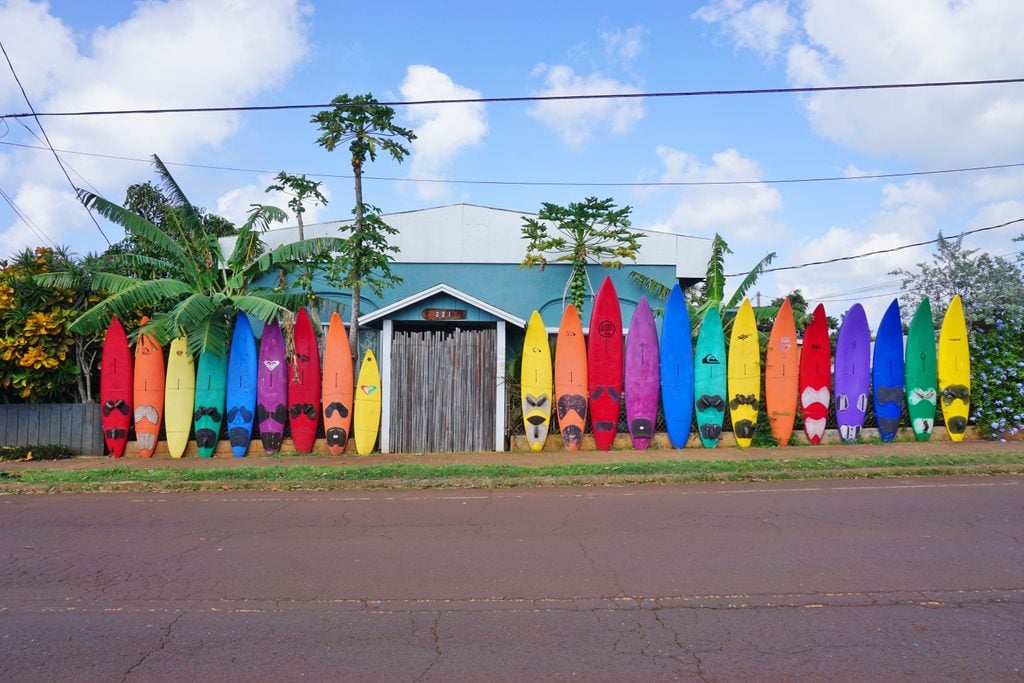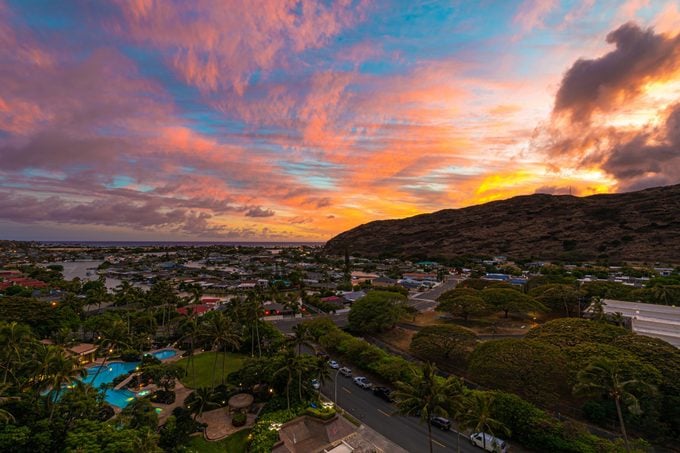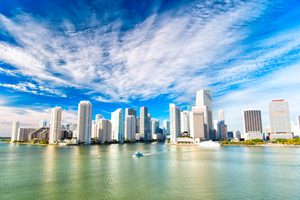Why Is the Cost of Living in Hawaii So High?
Updated: Jan. 20, 2023

Here's how its location, which is so idyllic, also makes it extremely costly to live there.
With its sandy white beaches, lush vegetation, and spectacular sunsets, it’s not surprising that Hawaii is a prime vacation destination. But while you might yearn to live there all the time, don’t expect it to make the list of best cheap places to live. Seems living in paradise can be prohibitively expensive.
Moneyrates.com recently ranked the fifty states on cost of living, wages, taxes, unemployment rate, and working conditions—and Hawaii ranked last in terms of best states to make a living.
“One of the realities of an island economy is it is going to be expensive,” says Richard Barrington, senior financial analyst at Moneyrates.com. “Overall, the cost of living in Hawaii is almost 90 percent more than the average cost of living in the United States.”
So why is the cost of living in Hawaii so expensive?
Housing is more expensive
The biggest overall factor in the cost of living in Hawaii is that there’s a limited amount of real estate. Translation? The cost of housing in Hawaii is about three times what it is generally in the United States.
“That’s a huge multiplier,” Barrington says. “Usually you see numbers like it’s 20 percent higher here, or 5 percent cheaper there.”
And for most people, housing is their biggest expense from month to month.
“So the thing that takes up most of your budget is also the thing that is disproportionately expensive compared to other states,” Barrington says. Pricy housing isn’t only a factor in Hawaii, however. These are the other most expensive cities in the United States.
Residents have to import many necessities
Another aspect that contributes to the cost of living in Hawaii is that in an island economy, residents have to import almost everything that they consume.
“There’s going to be very little in the way of farming or anything that’s space-intensive,” Barrington says. “You’re going to have to ship a lot of that stuff in.” Those transportation costs are then reflected in the prices. Groceries, for example, are 66 percent more expensive in Hawaii. This effects not only residents but visitors too. Here’s what you should know before booking your Hawaiian vacation.
The Aloha state doesn’t have a lot of manufacturing either. And typically countries have import and export balances; when imports get too expensive, people go with a less expensive domestic supplier. But Hawaii doesn’t really have that fluidity of choice for consumers to be able to switch between imports and exports, Barrington says. They’re heavily dependent on imports, from either the mainland United States or another country. Looking for other options? These are the cheapest states to live in the United States. And in regards to rent, we have you covered on whether rent will go down in 2023.
Utilities are costly
 After housing, the most disproportionately expensive cost in Hawaii is utilities. That’s also related to transportation. The Aloha State depends on imported petroleum to generate electricity. That fact and Hawaii’s isolated power grids contribute to the state having the highest power prices in the United States, according to the U.S. Energy Administration.
After housing, the most disproportionately expensive cost in Hawaii is utilities. That’s also related to transportation. The Aloha State depends on imported petroleum to generate electricity. That fact and Hawaii’s isolated power grids contribute to the state having the highest power prices in the United States, according to the U.S. Energy Administration.
“Hawaii is not just one place, it’s a fairly far-flung series of islands,” Barrington says. “So another factor that the Energy Administration cites in the high cost of energy there is that the power grids are fairly isolated because of the geography. And that contributes to higher costs.”
So what does that mean for residents of Hawaii? Energy costs are 72 percent higher than the average for the United States, Barrington notes. And that’s despite the fact that in 2017, Hawaii actually had the lowest residential energy consumption in the nation.
“They’re using less but paying more, because the sheer cost of energy is more,” Barrington says.
Labor is scarce
Finally, another reason the cost of living in Hawaii is so expensive may be circular: labor is scarce and cost of living makes attracting new workers harder.
With an unemployment rate of 2.8 percent, Hawaii is tied for fifth for the lowest rate in the United States. That means that while Hawaii is a good place for job seekers, the high cost of living is barrier. So it’s hard for employers to find competent workers. “”Their unemployment rate is so low and they don’t have that access to neighboring labor pools the way that states on the mainland do.” Barrington says. A labor shortage hits locations like Hawaii harder than other states. When a state in the mainland United States has low unemployment for an extended period of time, it will start to attract a stream of job seekers from other states. But not so for Hawaii. “They don’t have that fluidity of the labor force that the mainland would have, Barrington says. The result is competitive salaries, and this cost can get passed along to consumers. “That’s another cost of living factor,” he adds.
Does the cost of living in Hawaii make it out of your league? Check out the best places to move in the United States.

